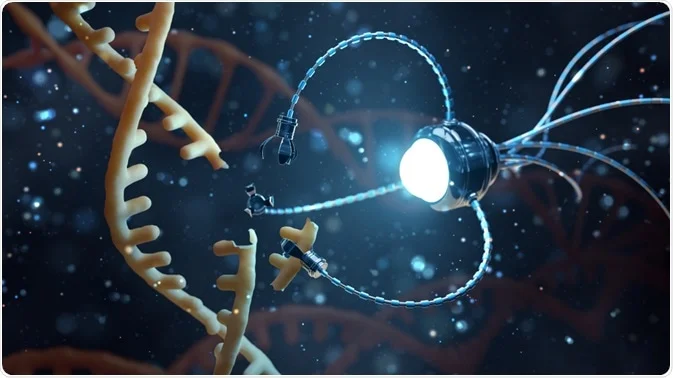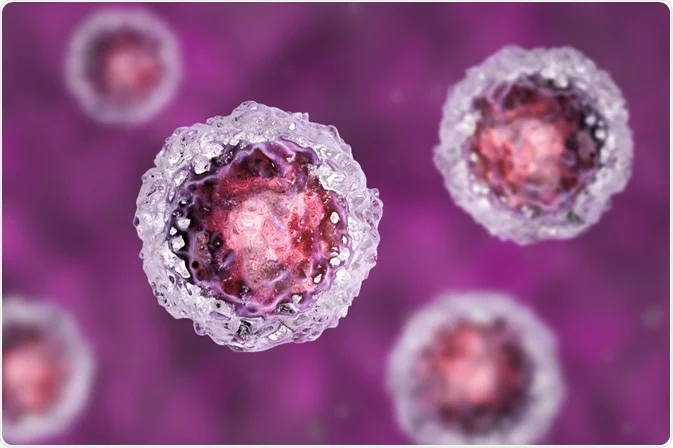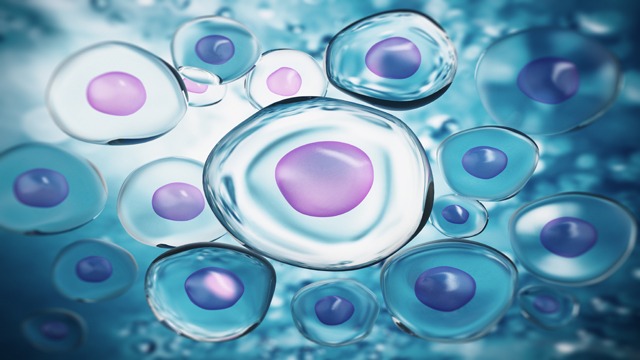Advances in DNA nanotechnology are opening up remarkable new possibilities for healthcare envisioning DNA not just as the carrier of genetic information, but as a programmable construction material for building molecular tools. While most applications are still in the research phase, the implications for drug delivery, diagnostics, tissue repair and cancer therapy are vast.
What is DNA Nanotechnology?
DNA nanotechnology uses the molecule of DNA as a structural building block. Scientists can design and fold DNA strands often using a technique called DNA origami so that they self-assemble into specific two- or three-dimensional shapes at the nanoscale. These structures can then serve as scaffolds, containers, or carriers for other molecules.
Because DNA naturally pairs in a highly specific way, and because DNA-based materials are biocompatible and programmable, DNA origami and other DNA nanostructures are ideally suited for medical applications.
Drug Delivery: A Key Promise
One of the most exciting healthcare applications of DNA nanotechnology lies in targeted drug delivery. Rather than relying on traditional carriers like liposomes or polymer nanoparticles, DNA-based vehicles offer precision, programmability, and control.
Researchers have shown that DNA origami structures can be loaded with chemotherapeutic agents such as doxorubicin through intercalation or non-covalent binding. These DNA–drug complexes can enter cancer cells more efficiently than free drug molecules, increasing efficacy and potentially reducing side effects. In some studies, DNA origami vehicles have even helped overcome drug resistance.
The appeal of DNA-based carriers is that they can be designed to open or release their payload in response to molecular “locks” or environmental triggers, such as pH, enzymes, or the presence of specific biomolecules. This can help ensure that drugs are released only at the target site minimizing off-target toxicity.
However, stability remains a critical challenge. Unmodified DNA nanostructures can be degraded by nucleases in the bloodstream, reducing their effectiveness unless chemically modified or protected.
Diagnostics, Biosensing and Therapeutic Vaccines
Beyond acting as cargo carriers, DNA nanostructures are also being developed as diagnostic tools and therapeutic vaccines.
DNA-based nanosensors can be engineered to detect disease biomarkers with high sensitivity. Their programmability means they can be tuned to recognize specific nucleic acid sequences, proteins, or small molecules offering potential for point-of-care diagnostic tools.
DNA origami has also been explored as a platform for delivering antigens or adjuvants in cancer vaccines. By arranging antigenic molecules on a DNA scaffold, researchers hope to boost immune recognition and create more precise immunotherapies.
In another innovative direction, scientists have reported DNA nanoparticles that contain built-in genetic instructions essentially acting as both carrier and medicine. This dual-function design could lead to novel therapeutic strategies in the future.
Tissue Engineering and Regenerative Medicine
DNA nanostructures are also being studied for tissue regeneration and regenerative medicine. By providing biomimetic scaffolds or signaling molecules, DNA-based materials can influence cell growth, migration, and differentiation helping to guide healing in tissues such as cartilage, bone, skin, or nerve.
For instance, DNA nanostructures can facilitate the delivery of growth factors or genetic material to stem cells, improving tissue repair outcomes. But translating these strategies from the lab to clinical therapies will require overcoming significant hurdles in stability, manufacturing, and safety.
Challenges and the Path to Clinical Translation
While the potential of DNA nanotechnology in medicine is enormous, several roadblocks remain.
In the body, DNA structures are susceptible to enzymatic degradation and immune clearance. Ensuring that DNA carriers remain intact long enough to reach target tissues is a major challenge.
Producing DNA nanostructures at scale reliably, affordably, and reproducibly remains complicated. Variability in folding, purity, and structural fidelity could hinder commercial development.
Introducing foreign DNA structures into the body raises questions about immune reactions, off-target effects, and long-term safety. Early studies suggest DNA nanostructures can be safe, but more in vivo and clinical data are needed.
And, as with all novel therapeutics, DNA nanomedicines will need to undergo rigorous testing for toxicity, biodistribution, clearance, and efficacy before becoming widely available. Bridging the gap from promising lab results to approved medical therapies will take time.
Outlook: Tiny Tools, Big Impact?
DNA nanotechnology holds the promise of transforming medicine by creating nanoscale tools that are programmable, biocompatible, and highly precise. If technical and regulatory obstacles can be addressed, DNA-based drug carriers, biosensors, regenerative scaffolds, and therapeutic vaccines could usher in a new era of molecular medicine making treatments more targeted, less toxic, and more effective.
However, for the foreseeable future, most of these innovations will remain in experimental or early-stage preclinical development. While the vision is bold tiny tools tackling big problems translating that vision into routine clinical practice will require careful engineering, comprehensive safety testing, and creative solutions to manufacturing and delivery challenges.
As research continues, collaborations between nanotechnologists, molecular biologists, clinicians, and regulatory agencies will be critical to turning these nanoscale ideas into real-world medical advances.
- Author Details






